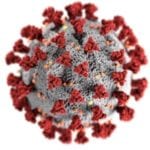The tech startup Connecticut Biotech has released a new mask frame that is designed to make face masks an even more effective countermeasure against COVID-19. Dubbed Secure Fit, the mask frame is essentially an exoskeleton that eliminates gaps and makes a cloth or surgical mask fit more tightly to the wearer’s face.

Each Secure Fit frame is tailored to the unique contours of the wearer’s face. Connecticut Biotech uses facial recognition technology to create that fit, scanning the customer’s face before 3D-printing a Secure Fit frame to match.
“Our Secure Fit mask frames increase the efficacy of masks and provide more protection because it is custom-made for each user,” said Connecticut Biotech CEO Don Vaccaro. “This not only ensures a comfortable fit, but a more secure fit.”
The Secure Fit tech was conceived by the University of Connecticut’s Cato T. Laurencin, who oversaw a team of researchers at the Connecticut Convergence Institute for Translation in Regenerative Engineering. Laurencin is affiliated with UConn Health, and filed a patent application with the support of UConn’s Technology Commercialization Services earlier in 2020.
“This is an important technology that can help a lot of people by providing a specific way to make regular surgical masks more protective,” said Laurencin. “It’s wonderful to see technology that started here in the state of Connecticut being developed by a local company.”
Connecticut Biotech moved into the commercial phase in July, and is now manufacturing and selling Secure Fit frames in limited quantities. However, the company is hoping to ramp up to large scale production and distribution before the end of the year.
Public health experts all over the world have recommended the use of masks to slow the spread of COVID-19. Secure Fit is one of several technology responses to that new reality. Some companies have released mask detection software, while others have tried to improve the performance of facial recognition algorithms on masked individuals.
–
August 18, 2020 – by Eric Weiss







Follow Us